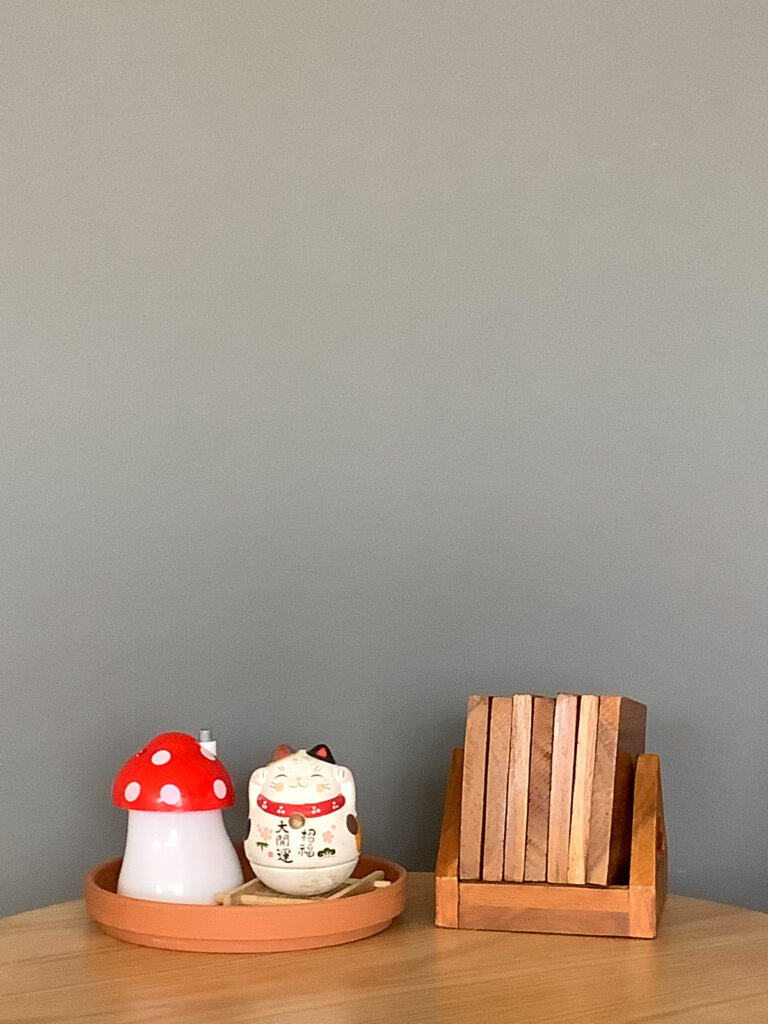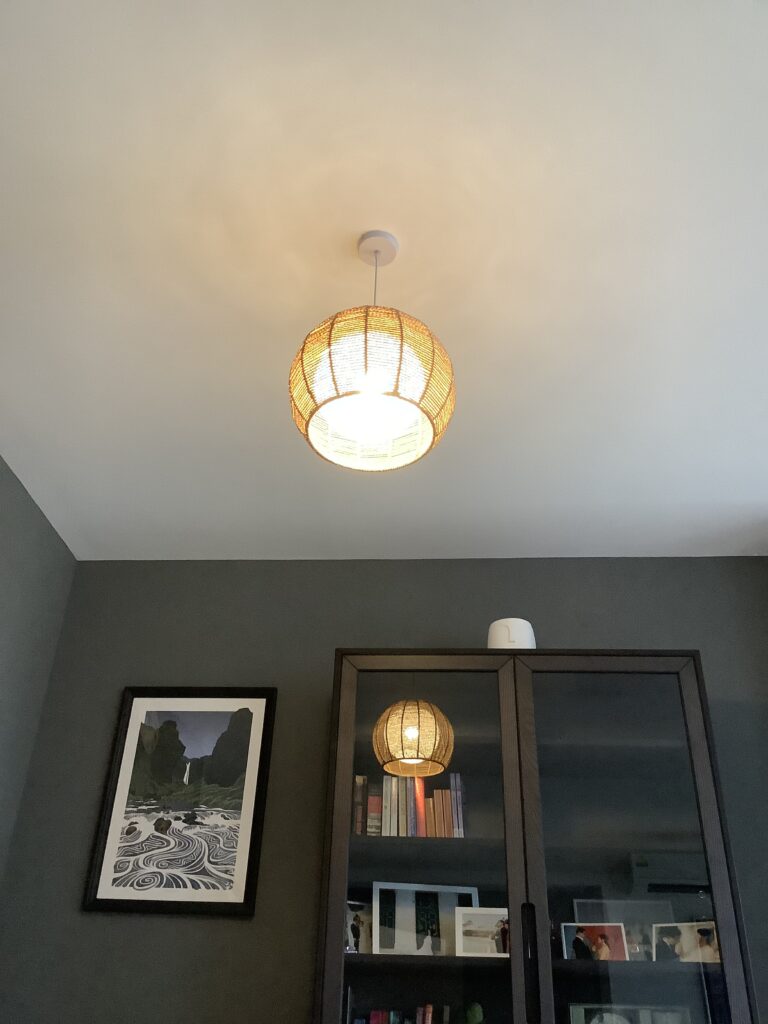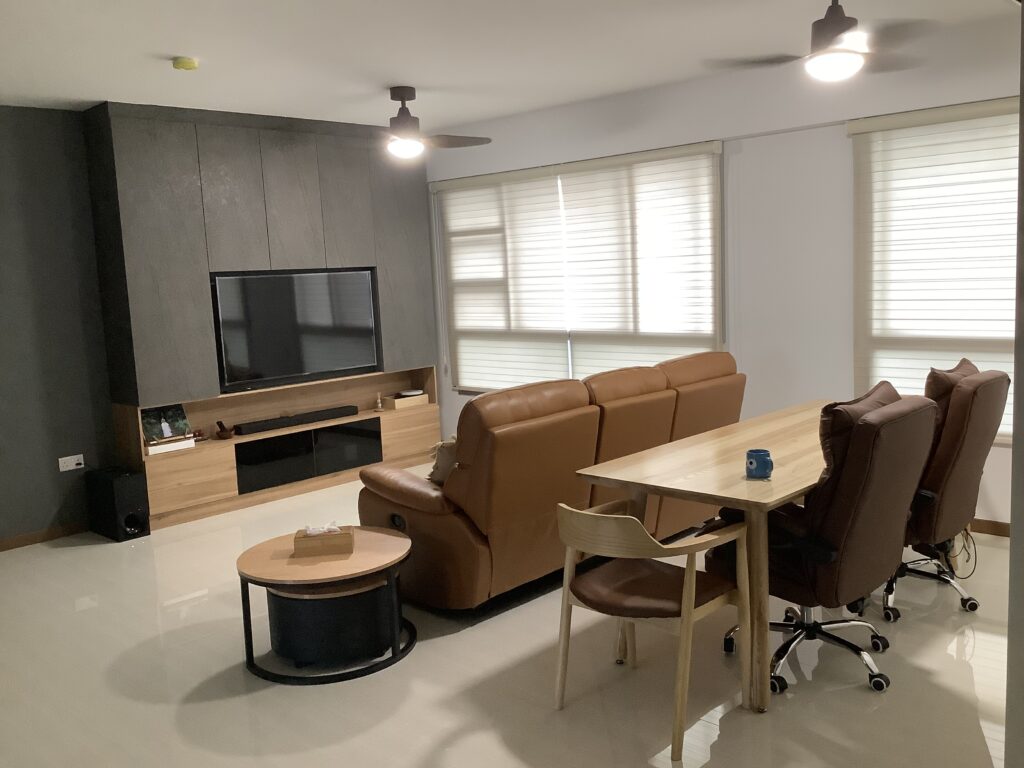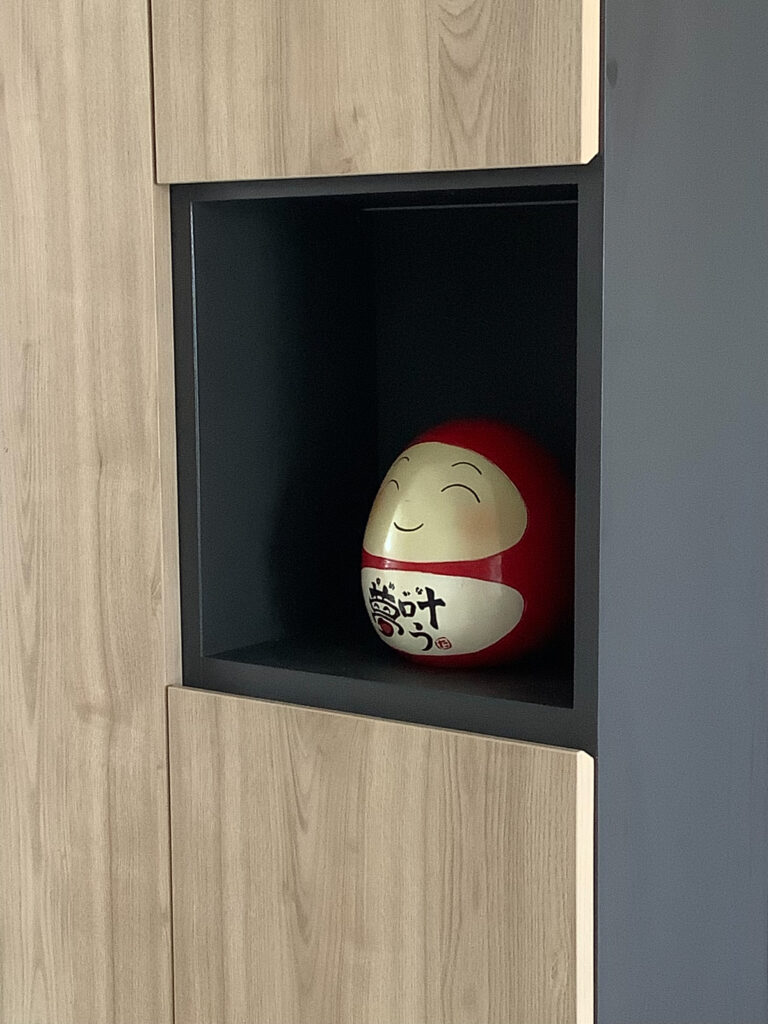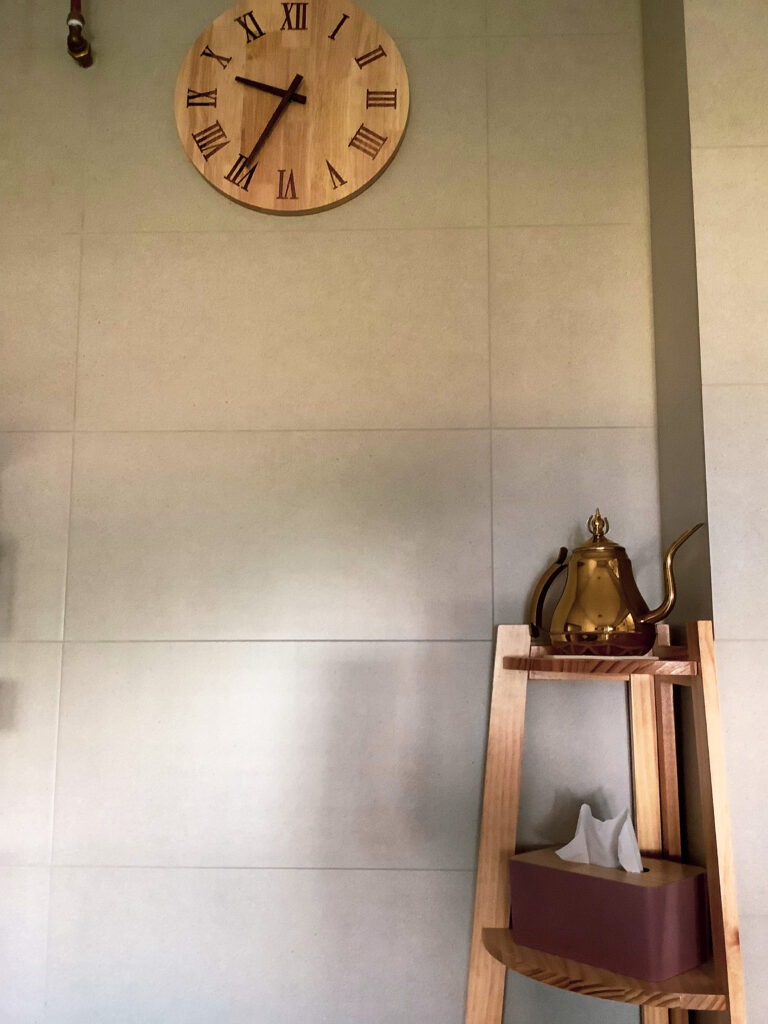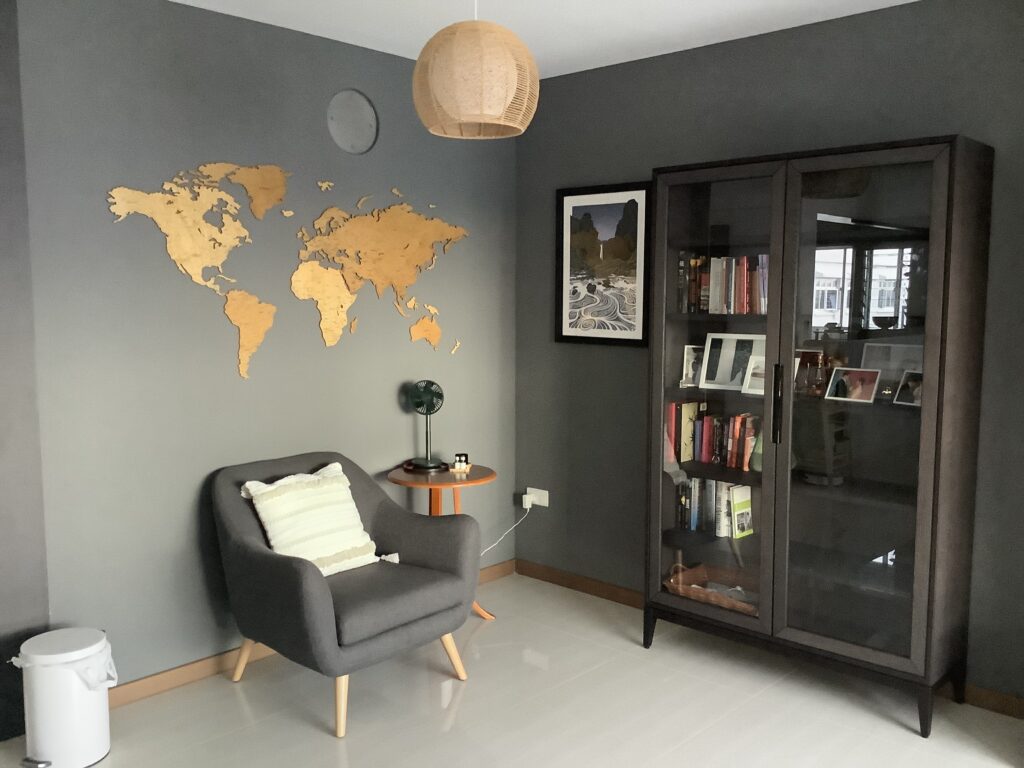The design style for my home is mainly Japandi style. When I first started thinking about what design I wanted for my home, I was clear about the elements that I wanted. Initially, I thought that what I was going for was an eclectic mix of Scandinavian, some mid century modern, some retro and some Asian elements.
I wanted the style to be very functional, practical, simple but yet a little dramatic and moody. I wanted to incorporate Zen and Asian inspired elements as well as some retro pieces. I wanted pops of forest green and lots of texture here and there in the home. I also love the design philosophies of ‘Hygge’ and ‘wabi-sabi’.
Most importantly of all, I want my space to be calming and comfortable. As I hunted for all the pieces and styles and brought them together in my home, I realised that the ‘electic mix’ I was going for has a term for it: Japandi Design.
What is Japandi design?
Japandi is the intersection of Scandinavian and modern Japanese interior design styles. Both, rooted in minimalist design principles, with a focus on warmth, natural elements, and muted color palettes. … Ample natural light and plants are also a key feature in Japandi interior design.
Japandi blends the smooth, modern lines of Scandinavian design with the sleek, functional, elegance of the Japanese aesthetic. It is rooted in minimalist design principles, with a focus on warmth, lots of textures, natural elements, and earthy tones.
Who is Japandi For?
If you are someone who likes utilitarian, simple and no frills design, prefers to have a mix of dark and light tones, loves textures in your home, loves woody elements, loves nature, loves neutrals and also wants some Asian values/Zen inspired elements in your home, the Japandi style is perfect for you.
8 Ways to get Japandi Design on a budget
1. Contrasts
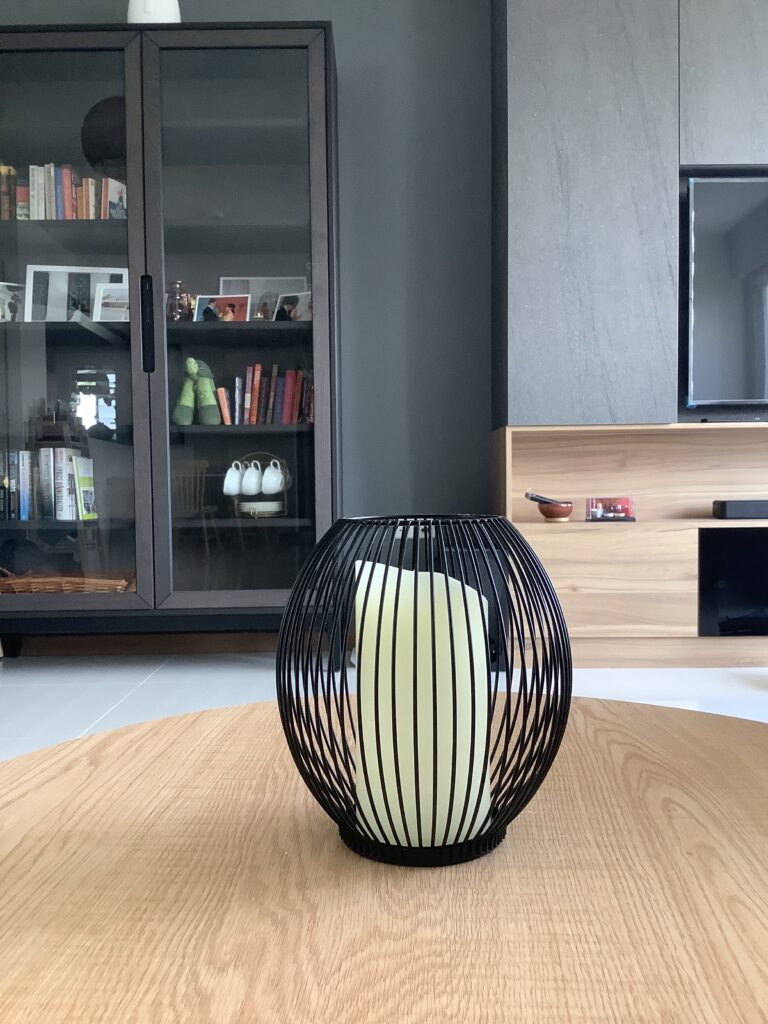
The japandi color scheme is a blend of the light, breezy neutrals from the Scandinavian style and the dark, moody neutrals from Japanese Zen. A budget-friendly way to have some contrast in your home is to paint some of the walls in dark grey and place some lighter elements against that dark gray wall. Dark grey walls at a corner of the house simply scream Japandi, especially when incorporated with simple furniture that make a statement. Dark gray walls can also help give a moody feel to an otherwise too light-hearted room.
My favorite place in the house to have dark gray walls is the living room, which is where many of us unwind and hangout with our loved ones (or just ourselves) to watch the television. Dark walls in the living room can help make a whole lot of difference to movie night or netflix and chill sessions. Dark walls also help make the space feel like a den or a cave – a safe haven where we can unwind and relax to the fullest.
Dark grey walls are not the only way you can incorporate some contrasts in your home. The main principle of contrasting elements is to place a dark shade (Such as black) next to a lighter shade (such as white or light gray). You can easily achieve a contrast look by placing a dark element (eg a wall light with black hardware) against a light element (eg a light gray wall).
2. Wood elements
Wood elements are a must-have in Japandi interior design. Scandinavian interior design tends to make use of light wood like ash wood and oak. Japanese Zen interior design tends to make use of darker richer woods like walnut or mahogany. For a Japandi design style home, since it is a blend of both Scandinavian and Japanese Zen interior design styles, don’t be afraid of playing around with different shades of woods as this helps to add more character to the home.
A budget-friendly way to add wood to your home is to use wood laminate for built-in carpentry like your TV console, and also to use wood for your loose furniture such as your dining table, coffee table. You can easily find woody furniture from popular budget friendly furniture platforms like Ikea, Amazon, Aliexpress and Taobao.
To enhance the woodiness of your home, you can display woody items like wooden coasters, wooden tissue box, or a wooden tray.
3. Natural materials and textures
Japandi is all about simplicity and connecting with nature, hence incorporating lots of natural elements in the home is a must in a Japandi interior design home. In addition to wood, there are plenty of natural materials out there, such as linens, stones, concrete, bamboo, rattan, and even paper, that can help to bring elements of nature into the home.
An easy and budget friendly way to have a breathtaking Japandi–style home, is to combine a blend of textures. A great factor about natural materials is that they tend to have some form of texture and uneven patterns. I love how cozy textures can make a home feel, and I can really relate to Nina Dobrev (when she described textures in her Architectural Digest home tour) as ‘yummy’.
It is really easy to add more interesting textures to your home to make the space more interesting and cozy. You can mix multiple kinds of wood or wood and glass to add some visual interest. You can also mix up the natural elements of your home. For example, you can have linens for your cushion covers, concrete inspired laminates for your cabinets, bamboo for your display bowls or display shelves, and stones such as granite, marble or slate for your table tops.
4. Simple shapes and lines
Since Japandi is about appreciating simplicity, Instead of getting overly fancy furniture with a lot of bells and whistles (such as fancy knobs, or victorian style legs), get furniture that is sleek and elegantly simple. Incorporate clean lines and simple shapes for that zen and calming aesthetic. If you do not want your furniture to be overly basic and if you want to have some character in your furniture, get furniture that has some form of flair in them (Refer to Point 7. Craftsmanship for some suggestions).
5. Warm and Neutral Color Palette
The purpose of Japandi interior design is simplicity and to invoke a sense of calm and groundedness. Therefore, loud Art Deco colors like hot pink, bright reds, rich purples are a huge nono. In addition to having contrast in the space (as mentioned in point 1), the colors used should be crisp, calming and of warm neutrals.
Even if there are pops of color, the colors should be more subtle and reminiscent of nature. For example, greens inspired by the forest, subtle blues/turquoises inspired by the sea, lakes and rivers, or muted purples inspired by orchids or lavender flowers. The key here if you want to add some color, is to ensure that the space feels calming and simple, even after adding the subtle pops of color here and there.
6. Wabi-Sabi Philosophy
Japandi builds on the Japanese expression “wabi-sabi”. Wabi-sabi is about finding the beauty of the imperfect and about connecting oneself to the Earth – to enjoy and appreciate the simple and small joys of life.
A great way to give yourself a daily reminder of the “wabi-sabi” philosophy is to place imperfection pieces around your home. Uneven placement of furniture, raw finishes like beautiful wood grains or concrete and various types of pottery are all great and budget friendly ways to incorporate the ‘wabi-sabi’ philosophy in your home.
Another great way to incorporate wabi-sabi into your home is to use wood elements that are of different wood types and color tones to make it more interesting. A space that has wood elements that are all of the same color tone can seem boring and too perfect.
7. Craftsmanship
Craftsmanship does not mean that your furniture needs to be expensive. Craftsmanship is all about the details. For example, instead of boring straight legs for your coffee table, get a coffee table that has curved legs instead. Also, instead of a bookcase that has straight legs, get a bookcase that has a subtle difference in the design, such as slightly slanted legs. To tie in the whole look together, get a paper or rattan lamp shade that has the same curvature as say, your round coffee table. All these small details can make the whole space look more polished, personalized and have more character.
8. Be intentional
Last but not least, Japandi design is ALL about being intentional. Every item found in a Japandi interior should be without excessive frills and without unnecessary embellishments. Japandi embraces the notion that “less is more” and that empty spaces in a room are indeed filled with purpose. There is no need to fill up every empty space or wall in your home if there is no reason to. On another note, a no-fuss interior also does not mean you need to live in a completely empty home. It just means that everything needs to be carefully chosen and curated.



